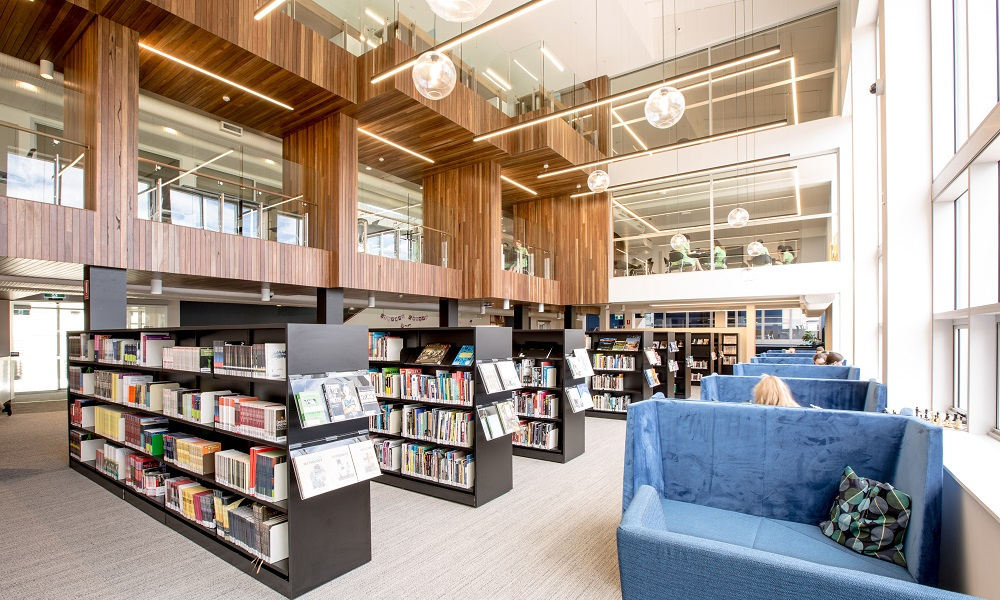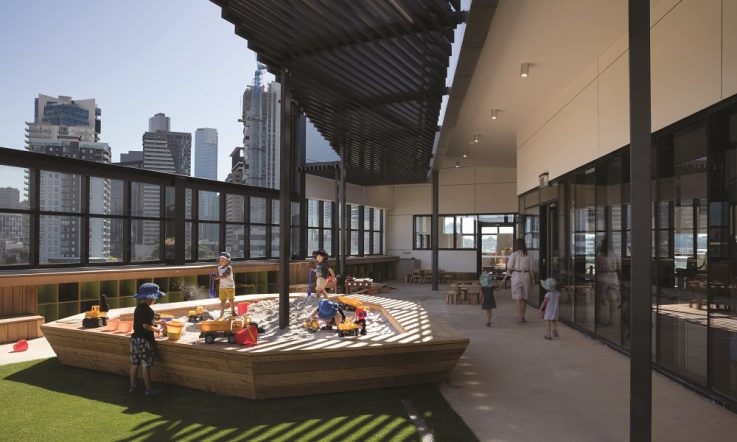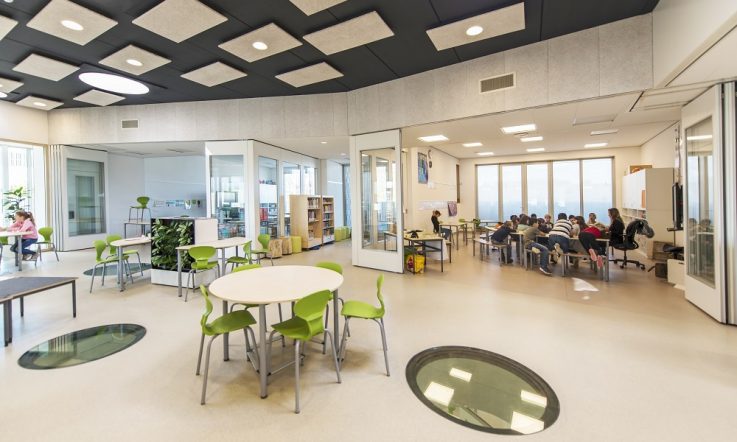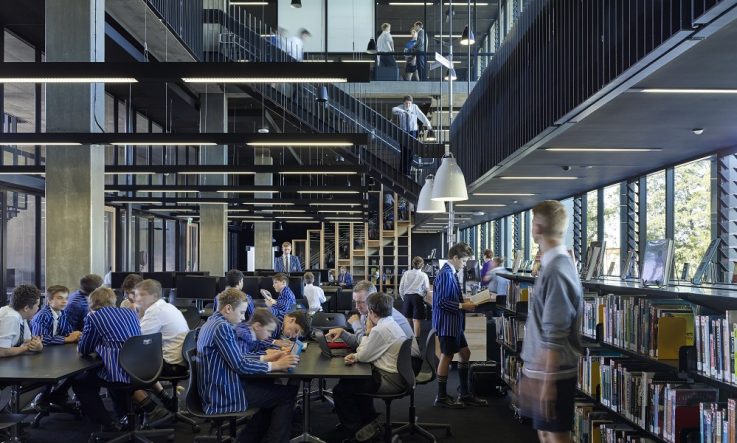Refurbishing existing school buildings can be a great way to breathe new life into ageing building stock that is no longer fit for purpose.
Somerville House, an all-girls school located in South Brisbane, opened the doors to their refurbished Seymour Library at the beginning of the 2018 school year.
The existing library was completely transformed with the addition of two mezzanines and zoned areas to support peer-to-peer learning.
Chad Brown is the Architect on this project and is Group Director of Education at ThomsonAdsett. He says when the team originally visited the school they saw some great opportunities with both the height and the volume of the building.
The existing Seymour Library was completely transformed. Image supplied.
‘[We] conceptualised for them the potential to build one, and then under close examination two, extra levels of usable study space and teaching and learning space in there,' he shares.
The new library provides students with a space for quiet reading, and for those who board on campus, a space away from their accommodation that they can go to at any time. It also has bookable teaching areas for lessons throughout the school day.
‘We worked really hard in terms of prioritising spaces for staff to have access to views and natural light,' Brown says, ‘and rationalising meeting room spaces and storage spaces where they work really efficiently for them.'
Designing the Seymour Library
The design includes two mezzanine levels in place of the existing void, which has increased the existing library space by 537 square metres. Timber and glass also feature heavily in the new library.
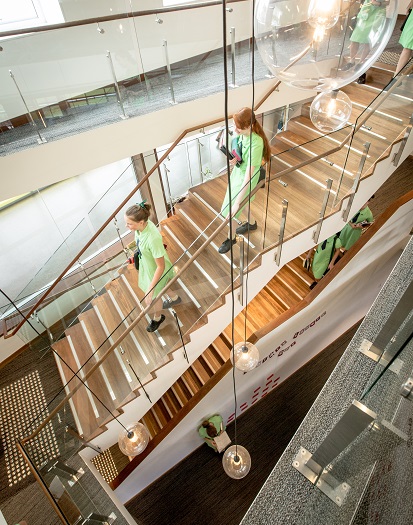
Timber dominates as you come into the space. Image supplied.
‘Timber dominates as you come into the space as well, so that was a really important thing, to introduce natural timbers,' Brown says. ‘We wanted to make sure that it was timber in spaces where students could engage with it and touch it and feel it. So the handrail on the stairs, there's all this timber and then glass.'
Brown says that whenever you're refurbishing a building, you seem to find peculiar little spaces that you never envisioned originally. In the case of this library, the position of the stairs created a little nook space which has been populated with cushions for quiet reading.
Technology is also prominent throughout, with an old stage space turned into a 3D printing MakerLab fitted out with a large touch screen television.
The architects took design cues from theatrical spaces by creating a number of balcony spaces that encourage students to collaborate. Brown says that the teachers were a critical part of the entire design process as they offered important insights into how the space could be best used for learning. ‘We worked with them in terms of the structure of it, the scale of those group workspaces and how, from a planning perspective, it would work when the teacher wants everyone's eye on them, so that was really important.'
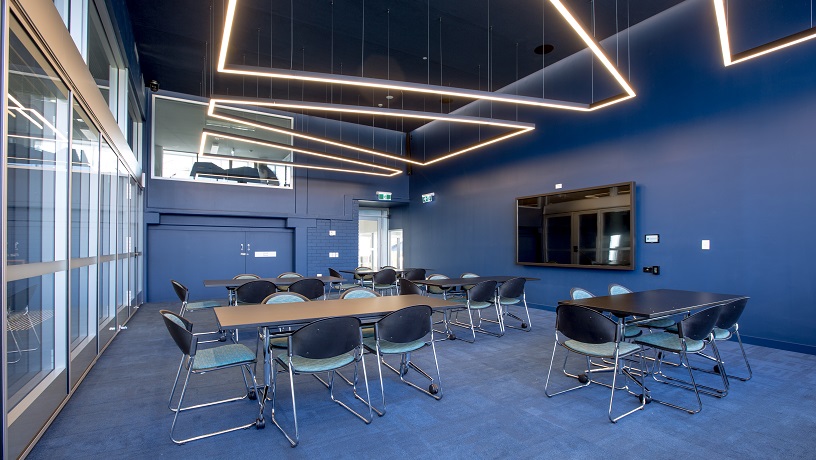
The new library has bookable teaching areas for lessons throughout the school day. Image supplied.
Refurbishing a building with limited resources and budgets
This was a $4.8 million project, but Brown tells Teacher that schools with limited resources and budgets can still consider a refurbishment. He says it comes down to understanding the bigger moves and where the real inherent value of the building is.
‘It's the big moves where you need to focus your effort and the value. What are the big moves on a project?'
Brown cites the case of a small school he's been working with in Fig Tree Pocket, a suburb of Brisbane, where an existing slab of concrete sitting on the ground was turned into a covered sporting area. It now serves as a multi-function space that gives a gathering space the school has always wanted but never had. ‘That gave them the ability to run community events, to design it in a way that it enabled them to consider hiring it out for events – so, from a revenue generation side of things. Having those really strategic conversations and decisions with the school, critically about “okay, there's value here”.'
The design team saw great opportunities with both the height and the volume of the existing building. Image supplied.
He adds it's all about investing money wisely to get a return on investment, and to ensure that the lived experience of the project will actually benefit the school and its students.
From a sustainability perspective, Brown says that using what already exists can transform a school. ‘To take a building and to invest a modest amount of money in that existing infrastructure can potentially “relife” and rebrand a school in a way that maybe a new building definitely can do, but you still have that tired asset sitting in your campus.
‘I think existing buildings offer so many fun and interesting and dynamic challenges for design teams and that's even just broadly. Design – not just from an architecture perspective, but [also] from walking into a space and looking beyond what's there now and imagining what could be – that really comes down to that open and honest conversation with the school about what do they really need in their school?'
He recalls this was a really important part of the Somerville House project and his working processes in general – listening to the school community and understanding what they need. ‘But you need that vision and that creativity to look beyond what's there now and go, “okay, there are great bones here and we can work with this”.'
Architect Chad Brown says that it’s important to understand where the real, inherent value of your building is when considering a refurbishment. Think about the buildings at your school. Are they being used to their greatest potential? Could they be changed to fit a better purpose?
Teaching staff at Somerville House were consulted throughout the refurbishment of the Seymour Library. As a school leader, do you consult with staff when it comes to adapting existing spaces or building new areas? How does this work in practice?
